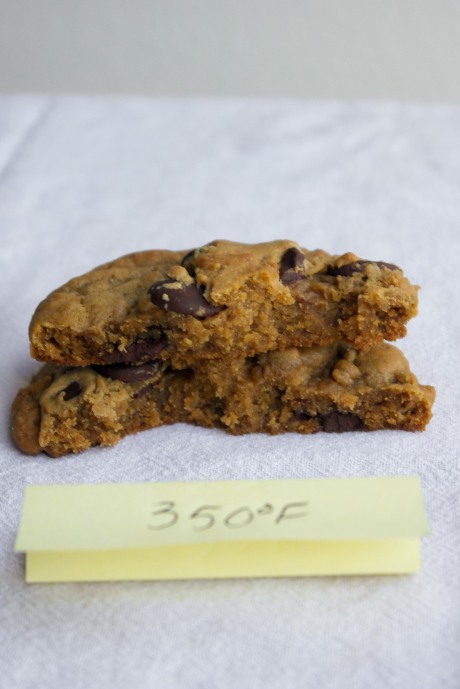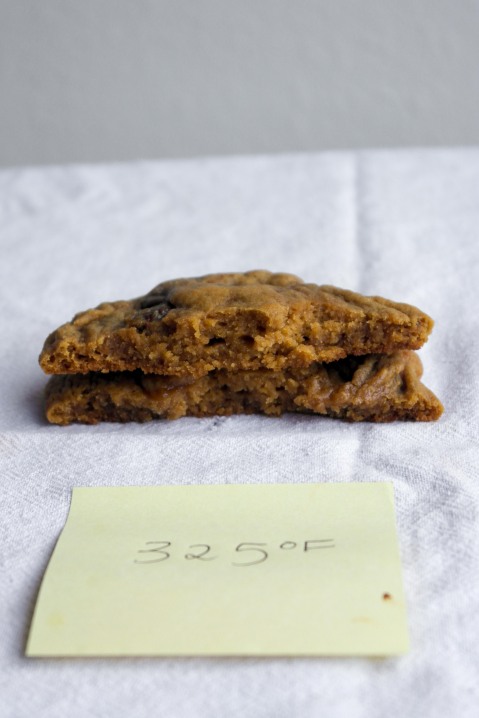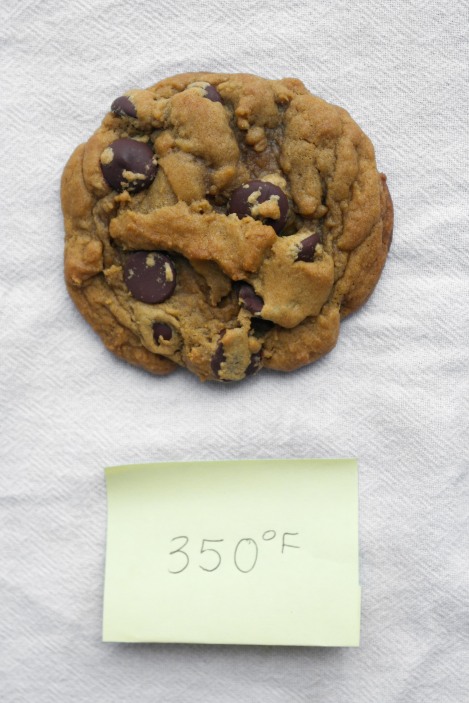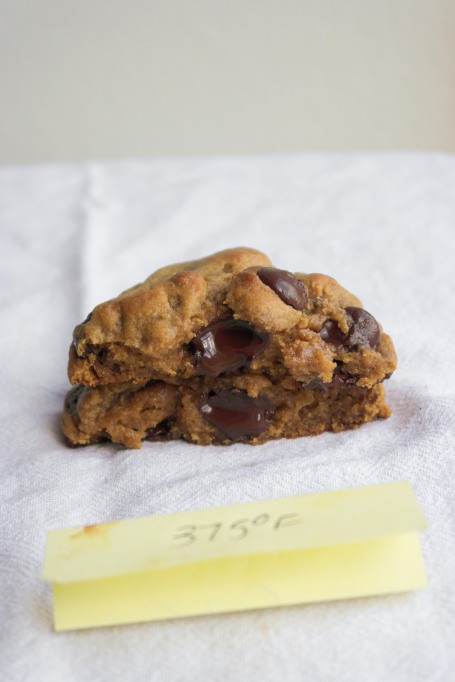Hello!
Welcome to my second Every Thirty Days Experiment. Today, I bring you something extra special and magical and mystifying. It’s the oven. Or rather, how hot your oven is running.
When you bake any baked good, you typically bake at 350 degrees fahrenheit. (Muffins are an exception. You usually bake those around 400 degrees.)
I wanted to see how imperative oven temperature is to the final result of the baked good.
The Question: How does difference in oven temperature affect cookies?
Things I knew beforehand:
- Chilled cookie dough spreads less because the butter is colder and as a result takes longer to melt and spread in the oven.
- A cookie made with shortening will spread less than a cookie made with butter because shortening melts at a higher temperature and thus doesn’t begin to spread until later.
- There is a positive correlation between amount of sugar and how much a cookie spreads: the more sugar you have in a cookie recipe, the more it will spread.
- A Silpat mat or parchment paper will also reduce spread because the mat/paper hang onto the cookie as it spreads so it doesn’t spread as much.
The Experiment:
So, in order to test spread, browning, softness and all that other jazz, I decided to bake three chocolate chip cookies from the exact same batch at different temperatures. I baked them each for 12 minutes. I baked two cookies of each at the following temperatures:
- 325 degrees F
- 350 degrees F
- 375 degrees F
The Results:
As you can see from the overall picture of the three, they are drastically different. The diameter is visibly different in each cookie, the browning is different and the overall browning and spread is different. Notice how 325 degree F is very thin and flattened, while the other two are much thicker.
Cookie baked at 325 degrees F:
The result: This cookie spread much more than the others. It also appeared underdone and too thin in places. It didn’t have the same level of attractive browning, either. Overall, it was kind of just an ugly cookie. Sorry, cookie. Forgive me. In terms of taste, it didn’t have the nice gradient of chewy to soft. It was kind of just soft all over.
Cookie baked at 350 degree F
The result: This cookie was baked at the traditional temperature of 350 degrees. It baked very evenly, has nice browning and looks all around amazing. Five points for looks! (But seriously looks aren’t everything.) It had the ever-desired chocolate chip cookie “gradient”: It had a nice chew and a bit of crunch on the edges but it was still soft in the middle. It was cooked evenly throughout.

Cookie baked at 375 degrees F:
The result: This cookie is visibly smaller in diameter than the two previous cookies. It is still visibly appealing, with browning and even spread. In terms of texture and softness, this cookie was a bit of a conundrum for me. This cookie was chewy on the edges and soft in the middle. However, the bottom of the cookie was slightly overcooked and quite thick, even with the use of a Silpat mat. Not a fan.
The Conclusions:
- The higher the temperature, the less your cookie will spread. Why? Because the higher temperature causes the cookies to firm faster (aka set faster) and this prevents spreading.
- Cookies baked at 375 degrees F will have a thicker, chewier bottom. It was a distraction. Repeated experiments with small sized cookie dough balls proved this again and again. The bottoms just were too thick for my liking.
- Baking at 350 degrees F is tried and true and definitely the best temperature to bake at!
Have troubles with spreading cookies? Here are a few tips:
- Slightly decrease the amount of sugar. Sugar increases spreading.
- Slightly increase the amount of flour. More flour, means a stiffer dough, which means less spreading.
- If you really want to, increase your oven temperature to 375 degrees F.
- Use parchment paper or a Silpat! They really work and “hang onto” your cookie to prevent it from spreading. They also bake more round.
- Use half shortening, half butter. Shortening melts at a higher temperature but is overall quite flavorless, so make sure to keep some butter in there!
- Chill your dough. I cannot stress this step enough. It prevents spread but additionally, the flavors all marinate and produce a more flavorful cookie.
Happy experimenting!






